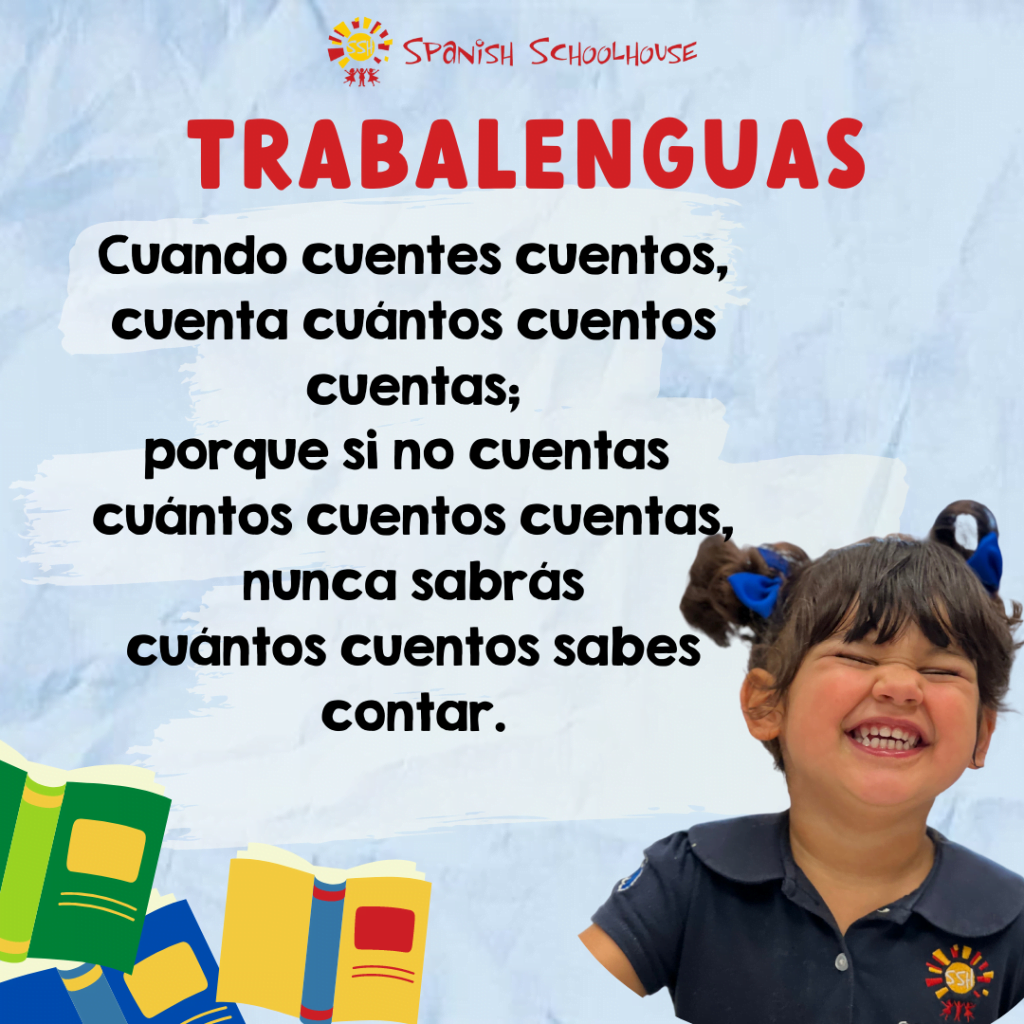Learning tongue twisters in a first language is a fun challenge. Learning them in a second language is even trickier! But for both children and adults, Spanish tongue twisters, or trabalenguas, are very useful learning tools. Here at Spanish Schoolhouse Fort Worth, we love to find fun and engaging ways to make learning Spanish a little easier. Tongue twisters can help improve pronunciation, accent, fluency, and muscle memory while producing a lot of laughs along the way!
Pronunciation Practice – Can You Roll Your Rs?
Pro Tip: Mastering pronunciation differences between Spanish and English can make you sound more like a native speaker! Below is a favorite rhyme that has been used by countless Spanish learners to work on rolling their Rs. There are many variations on this tongue twister. Hear it pronounced here.
Erre con erre: guitarra. Erre con erre: barríl. Qué rápido ruedan los carros, cargados de azúcar del ferrocarril.
R with R: guitar. R with R: barrel, How fast the cars roll down, full of sugar on the railway.
Repetition of rhymes and tongue twisters helps build muscle memory. The complex and subtle differences in pronunciation require different tongue placement than in English. Though it feels awkward at first, the only way to get better is to keep exercising those muscles over and over!
Gaming the System
If we can have fun when learning, the knowledge is more likely to stick, and we are more likely to stick with it. Games, rhymes, and tongue twisters bring out the silly, especially in our young Spanish Schoolhouse Fort Worth students. We love to introduce them to simple tongue twisters like:
Mi mamá me mima mucho.
My mom spoils me a lot.
Once they’ve warmed up with that, they can tackle some of these favorites:
Si Pancha plancha con cuatro planchas, ¿con cuántas planchas plancha Pancha?
If Pancha irons with four irons, how many irons does Pancha iron with?
Cuando cuentes cuentos, cuenta cuántos cuentos cuentas. Porque si no cuentas cuántos cuentos cuentas, nunca sabrás cuántos cuentos cuentas.
When you tell a story, count how many stories you tell. Because if you don’t count how many stories you tell, you’ll never know how many stories you told.

Tres tristes tigres tragaban trigo en tres tristes trastos en un trigal.
Three sad tigers were eating wheat in three sad (lousy) dishes in a wheat field.
Compadre, cómprame un coco. Compadre, coco no compro, porque el que poco coco come, poco coco compra. Yo como poco coco como poco coco compro.
Buddy, buy me a coconut. Buddy, I’m not buying a coconut, because he who eats little coconut, buys little coconut. As I eat little coconut, I buy little coconut.

Experiencing the Culture
One reason our Spanish Schoolhouse Fort Worth teachers love teaching trabalenguas is that they are reminded of their own childhoods. They can share the joyful memories and laughter of practicing these tongue twisters with the next generation of learners. Making learning fun, with a pinch of culture for good measure, is our superpower!
Tongue Twisters – A Lasting Linguistic Tool
Once you learn a tongue twister, you’ll never forget it! Even if it’s been decades since you said, “Peter Piper picked a peck…” or “She sells seashells…” we bet you can’t help reciting them when you hear those words now. Enjoy this opportunity to make lasting learning memories with your child – pick one Spanish tongue twister and learn it together! What’s your favorite tongue twister – in any language? Let us know in the comments below.

